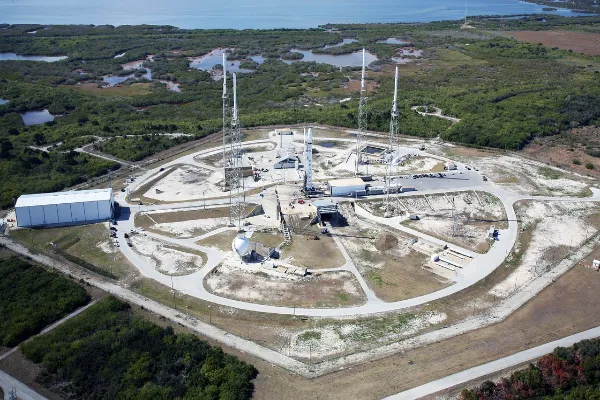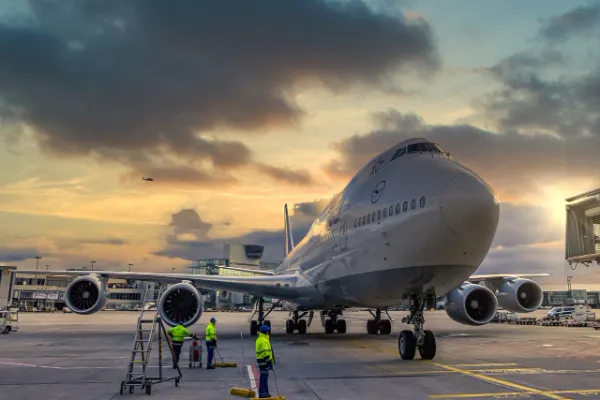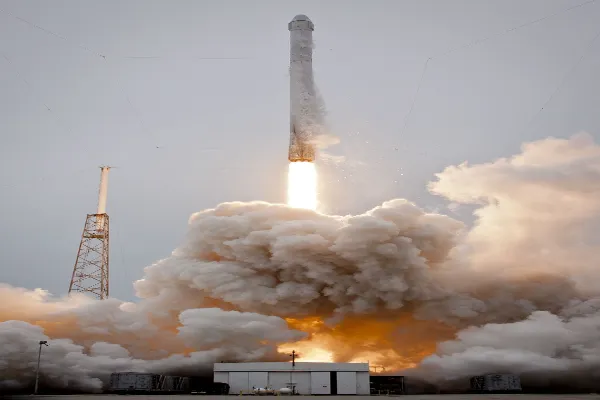Up, Up, and Away: Fun Facts About Aerospace Engineering

Aerospace engineering is a captivating area, filled with remarkable accomplishments. From the beginning of powered flight to the emergence of space exploration, aerospace engineering has played a crucial role in pushing boundaries. It is a diverse field that integrates physics, aerodynamics, materials science, and mathematics to design aircraft, spacecraft, and other aerospace machinery. This field is continuously progressing and incorporates cutting-edge technologies. Alongside the impressive achievements of aerospace engineers, there are also fun facts about aerospace engineering that showcase the remarkable progress made in this field.
Get Ready to Blast Off: Fun Facts About Aerospace Engineering
Aerospace engineering is a thrilling area of study that blends physics, math, and engineering to unravel the secrets of the universe. Aerospace engineers play a leading role in space exploration, from creating and building aircraft to constructing satellites and vehicles for space exploration. Here are a few fun facts about aerospace engineering:

- Aerospace engineering is one of the oldest forms of engineering – the first aerospace engineers were called aeronauts, and they worked on designing and constructing the earliest hot air balloons in the 18th century.
- The first powered flight took place in 1903, when the Wright Brothers flew their airplane for 12 seconds over a beach in North Carolina.
- Aerospace engineering is closely related to other branches of engineering, including mechanical engineering, electrical engineering, and civil engineering.
- Aerospace engineers design and construct aircraft, spacecraft, missiles, and satellites. They also develop new technologies and methods for space exploration.
- Aerospace engineers must understand the principles of aerodynamics, thermodynamics, materials science, and propulsion. They also must understand the principles of navigation and control systems.
- Aerospace engineers must work closely with other engineers and scientists to plan, design, construct, test, and modify aircraft, spacecraft, and other aerospace products.
- Aerospace engineers must have a strong understanding of physics, mathematics, and computer programming.
- Aerospace engineers must be creative and able to think outside the box.
- The most important skill for an aerospace engineer is problem-solving.
- Aerospace engineering is an exciting and fast-paced field with plenty of opportunities for advancement.
Take a Trip Down Aerospace Memory Lane: Interesting Facts About Aerospace Engineering

Aerospace engineering is an intriguing area of study with an impressive past. From the first flight experiments to the creation of state-of-the-art spacecraft, aerospace engineering has been at the forefront of technological progress. Here are some interesting facts about aerospace engineering that you may not be aware of:
- The Wright Brothers are credited with being the first to successfully fly an airplane, but it was actually an aerospace engineer by the name of George Cayley who first designed a successful glider in 1799.
- Aerospace engineering was first recognized as an official academic discipline in the early 20th century. In the decades since, the field has seen tremendous growth and innovation.
- The first liquid-fueled rocket, designed by Robert H. Goddard, was launched in 1926.
- This marked the beginning of the space age and ushered in a new era of aerospace engineering.
- The first satellite, Sputnik 1, was launched in 1957.
- This was a major breakthrough for the field of aerospace engineering, as it opened the door for the development of advanced communication and navigation systems.
- In 1969, Neil Armstrong became the first person to walk on the moon. This groundbreaking achievement was made possible by the work of countless aerospace engineers.
- Today, aerospace engineering is an essential part of our lives. It is used to develop aircraft, spacecraft, missiles, and satellites, as well as more advanced technologies such as drones and autonomous systems.
Aerospace engineering is an intriguing area of study that has a rich and impressive past. From early flight experiments to the creation of advanced spacecraft, aerospace engineers have continuously pushed the limits of what can be achieved. We are excited to witness the future advancements in this incredible field.
The Science of Flight: Fascinating Facts About Aerospace Engineering
Aerospace engineering involves designing, building, and maintaining aircraft and spacecraft. It is a complex field that requires knowledge of physics, math, and engineering. Over the years, aerospace engineering has led to the creation of revolutionary aircraft and spacecraft, changing the way we travel and explore the universe.

Let’s explore some interesting facts about aerospace engineering and flight. Firstly, aerospace engineering has made great strides in aerodynamics, which is the study of how air interacts with solid objects. Engineers have developed aircraft that can fly faster, farther, and higher than ever before. This has opened up new possibilities for travel to previously unreachable places.
Additionally, advancements in aerodynamics have made supersonic flight possible, exceeding the speed of sound. Secondly, aerospace engineering has transformed space exploration. Engineers have designed spacecraft that can journey to distant planets and moons, expanding our knowledge of the universe. They have also created spacecraft that can safely enter Earth’s atmosphere and land, allowing us to collect valuable data and samples.
Lastly, aerospace engineering has made significant progress in materials science. By using composite materials, engineers have developed aircraft and spacecraft that are lighter and stronger than ever before. This has enabled us to build aircraft that can fly higher and farther. Composite materials also help reduce noise pollution from aircraft. In conclusion, aerospace engineering is an exciting field that has brought about remarkable advancements in aerodynamics, space exploration, and materials science. Through innovative designs and materials, we continue to push the boundaries of flight and exploration.
Let’s Explore the Sky: Fun Facts About Aerospace Engineering
Aerospace engineering is a captivating area of study that advances with technology. It involves designing, building, and understanding aircraft and spacecraft. This field is crucial for exploring the sky. Here are a few fun facts about aerospace engineering:

- Aerospace engineering has a long history, dating back to the earliest civilizations. Early pioneers of the field include Leonardo da Vinci, who designed the earliest known flying machine, and Otto Lilienthal, who was one of the first to successfully fly a glider.
- Aerospace engineering has been integral in the development of the modern airplane. In 1903, the Wright brothers flew the first successful powered airplane, and since then, aircraft design has improved to make air travel safer and more efficient.
- Aerospace engineering is used to design and build spacecraft, satellites, and rockets. It is also used to develop new materials and technologies for space exploration. For example, the International Space Station is a product of aerospace engineering, and has been crucial in advancing our understanding of space.
- Aerospace engineering has also been used to develop new propulsion systems. The development of jet engines and rocket engines has allowed us to travel faster and farther than ever before.
- Aerospace engineering is a crucial part of the defense industry, as it is used to develop advanced weapons and military aircraft. In addition, aerospace engineering is used to develop unmanned drones and other surveillance technologies.
Aerospace engineers use their knowledge of science and engineering to create new technologies for aircraft and spacecraft. This field is always changing and has a lot of potential for exploration and development. It plays a crucial role in our world today.
Conclusion

Aerospace engineering is an intriguing area that provides a range of captivating prospects for students, engineers, and scientists. From creating advanced spacecraft to exploring innovative methods of traversing the cosmos, the opportunities are boundless. Aerospace engineers have the chance to contribute to projects that will influence the world and contribute to the development of aviation and space exploration. This field is both thrilling and fulfilling, offering numerous career paths filled with excitement and fulfillment. Read more here.